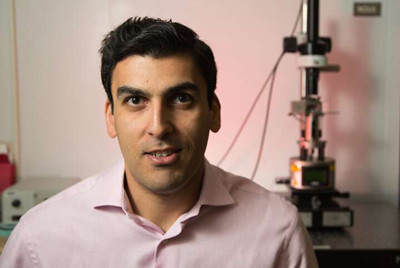
Evaporation can explain why water levels drop in a full swimming pool, but it also plays an important role in industrial processes ranging from cooling electronics to power generation. Much of the global electricity supply is generated by steam plants, which are driven by evaporation.
But determining when and how quickly a liquid will convert to a vapor has been stymied by questions about how—and how much—the temperature changes at the point where the liquid meets the vapor, a concept known as temperature discontinuity. Those questions have made it more difficult to create more efficient processes using evaporation, but now researchers from the University of Houston have reported answers to what happens at that interface, addressing 20 years of conflicting findings. The work was reported in the Journal of Physical Chemistry C.
The temperature discontinuity was first reported in 1999 by Canadian researchers G. Fang and C.A. Ward, who noted that they were unable to explain the phenomenon through classical mechanics. The new work solves that mystery.
Hadi Ghasemi, Cullen Associate Professor of Mechanical Engineering at UH, said the new understanding eliminates the "bottleneck" that has complicated predictions and simulations of processes involving evaporation.
"We demonstrated the physics of what happens within the space of a few molecules at the interface and accurately developed a theory on the evaporation rate," Ghasemi said. "That allowed us to explain all of the conflicting findings that have been reported in the last 20 years and solve this mystery."
In addition to Ghasemi, co-authors for the paper included first author Parham Jafari, a Ph.D. student at UH, and Amit Amritkar, a research assistant professor at UH.
The researchers first approached the question in the lab, but Ghasemi said they were unable to get the needed spatial resolution for a definitive answer. They used a computational approach in order to find the properties of liquid and vapor within the length of a few molecules.
The explanation—developed using the Direct Simulation Monte Carlo method—will allow scientists to more accurate simulate the performance of all systems based on the theory of evaporation.
"With this understanding, we can more accurately develop simulations of performance and efficiency, as well as design and predict the behavior of advanced systems," Ghasemi said.
That would have applications for energy, electronics, photonics and other fields.
As just one example of the importance of evaporation, Ghasemi noted that 80% of electric power globally is generated through steam plants, which work based on evaporation phenomena.

